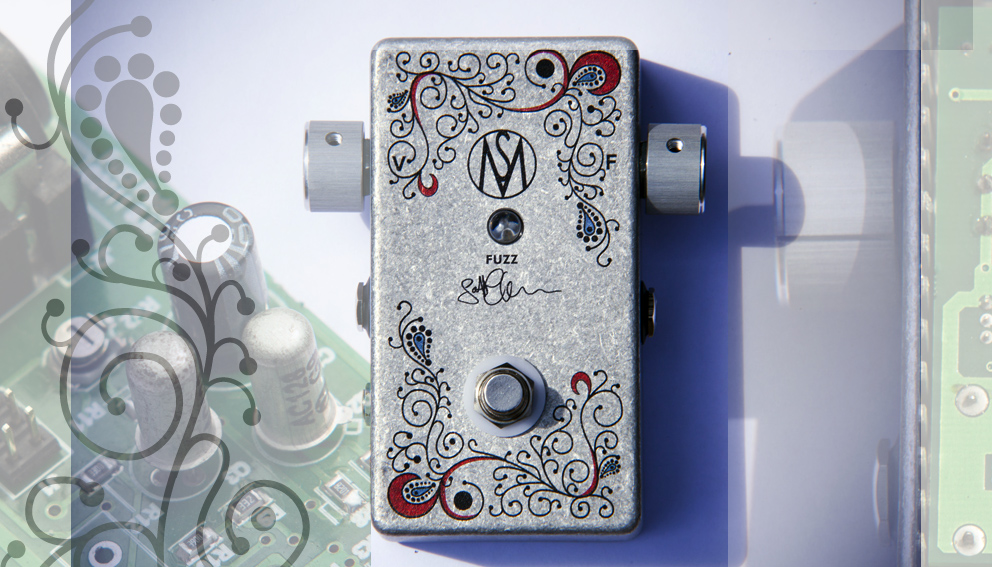In 2010, Scott and Luke approached me about looking at the Fuzz Face circuit with a view to manufacturing it under Scott’s name. With great embarrassment Scott showed me his original unit, assuming I’d flinch at his ‘primitive’ efforts at putting together an electronic device.
In 2010, Scott and Luke approached me about looking at the Fuzz Face circuit with a view to manufacturing it under Scott’s name. With great embarrassment Scott showed me his original unit, assuming I’d flinch at his ‘primitive’ efforts at putting together an electronic device. But he needn’t have worried! Given his inexperience at the time, his efforts were most creditable and I could find no fault with it. And by then it had served him well for several years without trouble – the proof of the pudding etc.Being an old-timer does have its advantages; it’s true that Eric Clapton is older than me, but not by much. My special advantage from the point of view of the fuzz pedal is that I’m old enough to remember when Germanium transistors were in common use; we did lots of designing and experimenting with them when I was at college studying Electronic Engineering. After hearing Scott and Luke’s ideas, I did a thorough analysis of the Fuzz Face circuit – using well remembered Germanium transistor techniques – and came to the conclusion that its inventor (back in the 1960s) was definitely inspired. It appears to achieve exactly what the guitarist wants for that particular effect, with a mere handful of components. At any rate that’s the case in theory.My concern was the temperature stability of circuits I had seen published on the web by various experimenters. Characteristics of Germanium transistors are very susceptible to temperature change, which is one of the main reasons they were superseded by Silicon, once the manufacturing techniques were perfected. Scott confirmed my feelings by mentioning that he’d known of players keeping their fuzz pedal in a fridge until it was time to use it!But Germanium is still the preferred technology for creating the fuzz effect and I looked at ways of improving the stability of the circuit without significantly altering the performance. It was essentially a trial-and-error process: plugging alternative component values into the analysis software and checking the predicted change in circuit conditions as temperature was varied. Eventually I seemed to hit on a suitable combination, involving a couple of slight changes to the circuit and component values of my own design; it is very much a compromise between conflicting factors. The result is a design which Scott, after extensive listening tests by Luke and himself, is satisfied replicates the sound of his original fuzz pedal, but which doesn’t change its performance during the summer. No need now for that fridge backstage!






